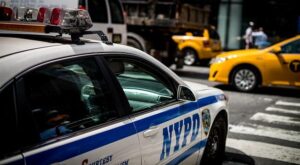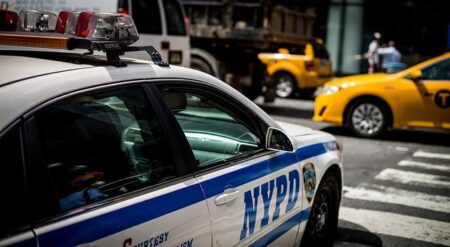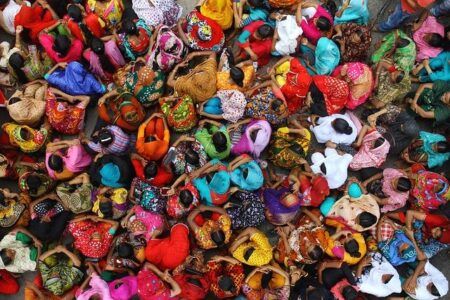In recent months, the Bronx and Brooklyn have witnessed a disturbing rise in gun violence, casting a shadow over communities already grappling with deep-rooted social and economic challenges. As shootings continue to disrupt public safety and strain local resources, New York City faces an urgent imperative: to implement effective strategies that not only curb the immediate threat of gun violence but also address the underlying factors fueling this surge. This editorial explores actionable measures the city can take to stem the tide of shootings and restore peace to neighborhoods most affected in these boroughs.
Root Causes Driving Shootings in the Bronx and Brooklyn
The surge in shootings across the Bronx and Brooklyn is rooted in a complex blend of socioeconomic challenges, systemic neglect, and community fragmentation. High poverty rates and limited access to quality education create environments ripe for violence. Many neighborhoods suffer from underfunded schools, scarce employment opportunities, and a lack of supportive community programs that can effectively deter youth from criminal activity. Additionally, the prevalence of untreated mental health issues, coupled with easy access to firearms, exacerbates tensions and elevates the likelihood of violent confrontations.
Key contributing factors include:
- Persistent economic inequality and unemployment
- Insufficient mental health resources and outreach
- Weak community-police relations fueling mistrust
- Limited after-school and recreational programs for youth
- Proliferation of illegal firearms
To illustrate some of these conditions, the table below highlights select socioeconomic indicators in the most affected areas:
| Indicator | Bronx | Brooklyn | NYC Average |
|---|---|---|---|
| Poverty Rate | 30% | 22% | 18% |
| Unemployment Rate | 12% | 10% | 8% |
| High School Graduation Rate | 65% | 70% | 78% |
| Total Youth Centers per 100k | 3 | 5 | 7 |
Community-Led Initiatives Showing Promising Results
Neighborhood-based organizations have emerged as pivotal actors in curbing gun violence, leveraging intimate community knowledge to foster safer environments. Initiatives like Ceasefire Harlem and the Bronx Defenders’ Violence Intervention Program focus on real-time conflict mediation, employing trained outreach workers who connect directly with individuals most at risk. These programs have demonstrated a measurable drop in violent incidents by building trust and offering alternatives to retaliation, often filling gaps left by traditional law enforcement approaches.
Equally important are youth engagement projects that emphasize mentorship, employment, and education to divert young people from the cycle of violence. Partner organizations have seen success through:
- After-school programs providing academic support and creative outlets
- Job training initiatives tied to local businesses
- Peer counseling networks facilitated by formerly incarcerated youth
| Initiative | Focus Area | Impact Rate |
|---|---|---|
| Ceasefire Harlem | Conflict Mediation | 30% reduction in shootings within 12 months |
| Bronx Defenders VIP | Violence Intervention | 25% fewer repeat offenses |
| Brooklyn Youth Connect | Youth Employment | 40% increase in job placements |
Strengthening Police and Community Partnerships for Safer Neighborhoods
Building trust between law enforcement and residents remains one of the most effective strategies to reduce gun violence in the Bronx and Brooklyn. Initiatives that foster open dialogue, such as community policing forums and neighborhood patrol collaborations, create an environment where citizens feel valued and heard. By prioritizing transparency and accountability, the NYPD can dismantle barriers and transform adversarial relationships into productive partnerships that empower local communities.
Programs focusing on youth engagement prove especially vital in preventing the cycle of violence. Supporting after-school activities, mentorship opportunities, and job training aligned with police involvement not only redirect energy but also humanize officers in the eyes of young people. Below is a snapshot of key community-based approaches showing early promise in lowering shooting incidents:
| Approach | Core Component | Bronx & Brooklyn Reach |
|---|---|---|
| Neighborhood Ambassadors | Resident-led patrols with officer support | 5 precincts |
| Youth Mentorship | Police-volunteer mentors for teens | 3 community centers |
| Conflict Resolution Workshops | Joint sessions between officers and locals | Ongoing citywide pilots |
Investing in Youth Programs to Prevent Future Violence
Allocating funds to youth initiatives is a proactive strategy that cities like New York must champion to curb violence long-term. By creating safe spaces where young people in the Bronx and Brooklyn can engage in mentorship, education, and skill-building, the city will not only offer alternatives to gang involvement but also empower the next generation with tools for success. Programs focusing on emotional intelligence, conflict resolution, and career readiness can replace the cycle of trauma with hope and opportunity.
Effective youth programs share common traits that encourage sustained engagement and positive outcomes:
- Community-led leadership that builds trust
- Access to mental health resources and counseling
- After-school and summer activities tailored to diverse interests
- Job training and internship placements with local businesses
| Program Type | Key Benefit | Estimated Cost per Youth (Annual) |
|---|---|---|
| Mentoring & Leadership | Positive role models | $1,200 |
| Job Skills Training | Employment readiness | $1,800 |
| Mental Health Support | Trauma healing | $900 |
| After-School Clubs | Safe engagement | $750 |
To Conclude
As New York City continues to grapple with the persistent challenge of gun violence, particularly in the Bronx and Brooklyn, a multi-faceted approach is imperative. Strengthening community-police relations, investing in youth programs, enhancing economic opportunities, and implementing targeted enforcement can collectively contribute to safer neighborhoods. While no single solution will eradicate shootings overnight, concerted efforts from city officials, law enforcement, and local communities offer the best chance to protect residents and restore peace. The time for action is now, with a clear focus on sustainable strategies that address root causes and foster long-term safety across New York City.













